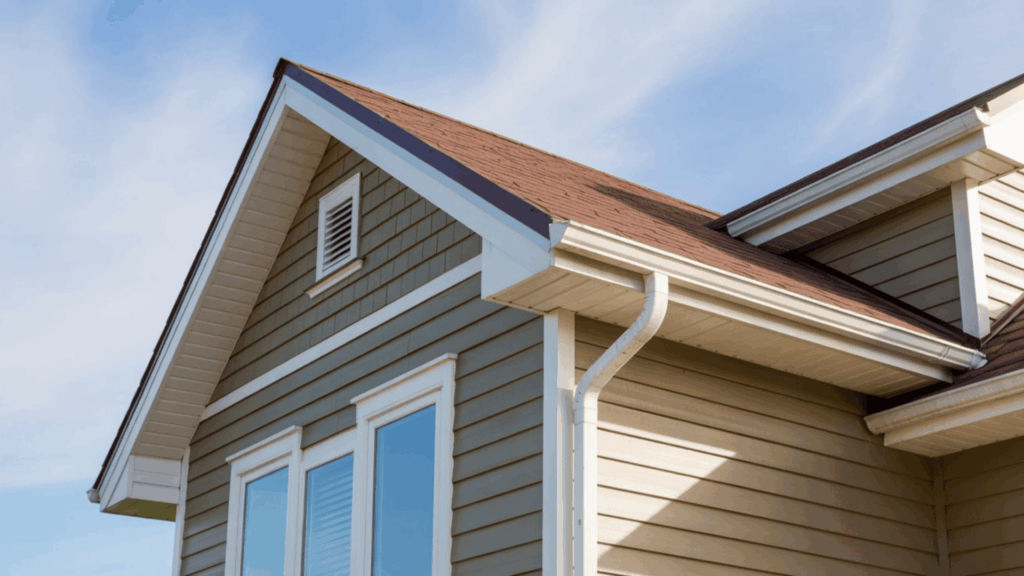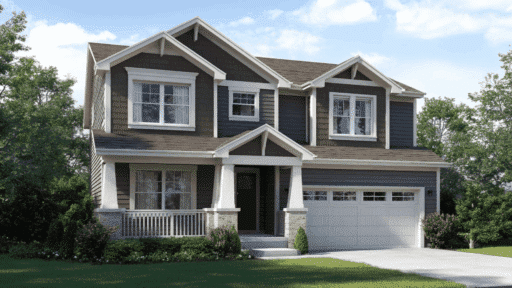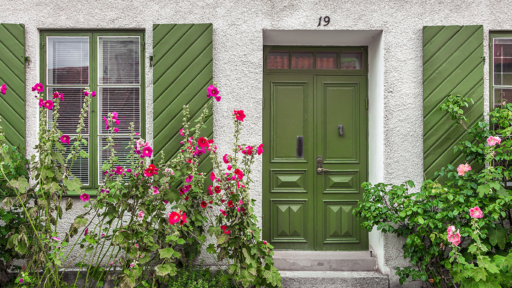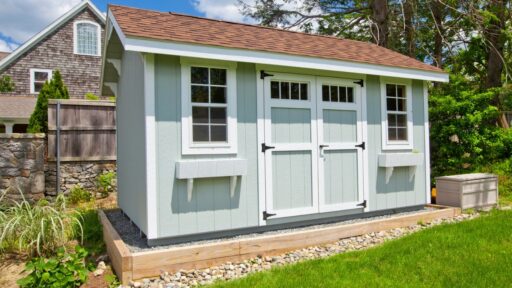A fascia house may look simple at first glance, but the fascia itself plays a major role in how your home stays protected and how your roofline looks.
Most homeowners don’t think about it until they notice damage, sagging gutters, or signs of wear. Understanding fascia early makes it easier to keep your home in good shape and avoid costly repairs.
Today, I’ll help you understand what fascia really does, why it matters, and how it affects both the look and health of your home.
What is Fascia on a House?
Fascia is a flat board that runs along the edge of your roof, sitting just under the shingles and behind the gutters. It covers the ends of the rafters and gives the roofline a clean, finished look.
When you stand in front of your home and look up at the gutters, the board behind them is the fascia.
It’s different from other roof parts: soffit sits underneath the overhang, eaves describe the whole overhang, and trim is a general finishing term.
Fascia matters because it supports your gutters and helps guide water away, keeping your home protected and looking neat.
Key Functions of Fascia House

Fascia plays an important role in keeping your home safe and looking clean. It may look simple, but it supports the roof structure and protects your home from weather damage.
1. Protects Roof Structure
Fascia helps protect the roof by covering the ends of the rafters. These rafters are often made of wood, which can weaken if exposed to rain, snow, or strong sunlight.
By acting as a shield, fascia keeps the roof’s frame dry and steady. This helps prevent rot, mold, and long-term damage that can be expensive to fix later.
2. Supports and Stabilizes Gutters
Fascia gives gutters a strong and stable surface to attach to. Without this support, gutters can loosen, sag, or leak during heavy rain. A solid fascia keeps the gutter system straight so water flows away from your home.
This protects the foundation, siding, and landscaping from water damage. Good fascia means cleaner drainage and fewer gutter problems.
3. Seals the Roof Edge From Moisture
Fascia closes the gap between the roof and the outside air, helping keep moisture out. When water sneaks in, it can cause leaks, rot, and mold inside the roof.
Fascia creates a tight seal that blocks rain, snow, and humidity from entering. This simple board plays a big role in keeping your home dry and safe year-round.
4. Enhances Curb Appeal
Fascia gives the roofline a smooth, finished edge that makes the home look clean and well-designed. It hides rough or uneven parts of the roof structure and creates a neat border around the top of the house.
When painted or matched with the trim, the fascia adds style and improves curb appeal. It’s a small detail that makes a big visual difference.
Types of Fascia Materials
Choosing the right fascia material matters because each option has its own durability, cost, and upkeep needs.
| Material | Durability | Maintenance | Cost | Moisture Resistance | Pros | Cons | Best For |
|---|---|---|---|---|---|---|---|
| Wood | Medium | High | Low–Medium | Low | Natural look, easy to paint | Can rot, needs frequent care | Dry climates, traditional homes |
| Vinyl / uPVC | Good | Low | Medium | High | Won’t rot, low upkeep | Can fade or crack in extreme temps | Homeowners wanting low maintenance |
| Aluminum | Very Good | Low | Medium–High | High | Lightweight, resists rot | Can dent on impact | Humid or rainy areas |
| Steel | Excellent | Low | High | Medium–High | Strongest option, great in harsh weather | May rust if the coating wears | Heavy weather zones |
| Composite | Excellent | Very Low | High | High | Long-lasting, looks like wood | Higher cost | Long-term performance with minimal care |
This chart makes it easier to compare your options so you can choose the fascia material that fits your home, budget, and climate.
Signs for Repair or Replacement
Your fascia can show clear warning signs when it’s starting to fail. Watching for these helps you catch problems early and avoid bigger damage.
- Cracks in the board that make it weak or uneven.
- Gaps between the fascia and the roofline.
- Soft or rotting spots caused by moisture.
- Gutters sagging or pulling away from the house.
- Water is collecting or leaking behind the fascia.
- Mold or mildew is growing along the roof edge.
- Insects or small animals nesting inside damaged areas.
If you spot any of these issues, it’s best to act quickly so the problem doesn’t spread.
Fascia Board Sizes, Thickness, and Design Guide
Fascia boards usually range from 6 to 12 inches wide, depending on your roof style and the size of the overhang. Wood fascia offers flexible sizing, while vinyl, aluminum, and steel come in standard widths.
To choose the right size, measure from the roof edge to the bottom of the soffit. Pick boards that are straight, smooth, and well-coated for an easy installation.
Most homeowners match fascia color to gutters, trim, or siding for a clean look.
White is the most common choice, while black, charcoal, and dark gray create a modern style. Warm tones like beige or bronze pair well with natural siding.
How Much Does Fascia Cost?
Fascia pricing depends on the material, home size, and job complexity. Wood is usually on the lower end of the price range, while composite and steel sit at the higher end due to their durability.
Most fascia replacement projects cost $7–$40 per linear foot, including materials and labor. Homes with longer rooflines or two-story designs tend to fall on the higher side.
For a full home, the total price usually falls between $1,050–$3,300. This can rise if the damage has spread or if old boards are difficult to remove.
Costs can increase if the soffit, drip edge, or gutters also need repair or replacement. These extra fixes are common when the fascia has been exposed to long-term moisture.
Fascia and Soffit: How They Work Together

Fascia and soffit sit side by side on the roofline, and each one supports the other to keep the home protected, ventilated, and visually balanced.
- Role in Ventilation: Soffit brings fresh air into the attic through small vents, helping control heat and moisture. Fascia seals the roof edge so air moves in properly without letting in water or pests. Together, they keep the attic dry and improve airflow.
- Design Match: Fascia and soffit should match in color and style to create a clean, finished look. When they mix well, the roofline appears even and balanced, which improves overall curb appeal.
- Energy Efficiency: Good ventilation from the soffit and proper sealing from the fascia help regulate attic temperature. This reduces heat in summer, prevents moisture buildup in winter, and supports better energy efficiency throughout the home.
Common Fascia Problems and What Causes Them
A few common problems can cause fascia boards to weaken or fail over time.
1. Water Damage
- What Causes It: Poor gutter installation, roof leaks, and ice dams push water onto or behind the fascia.
- Solution: Fix gutter alignment, repair roof leaks quickly, and improve roof insulation to prevent ice dams.
2. Physical Impact
- What Causes It: Storms, strong winds, or falling branches can crack or loosen the fascia.
- Solution: Inspect after storms, trim nearby trees, and replace damaged boards right away.
3. Moisture and Humidity
- What Causes It: Humid climates make wood fascia swell, soften, or develop mold.
- Solution: Use moisture-resistant materials and ensure proper ventilation around the roofline.
4. Sun Damage
- What Causes It: Strong UV rays fade paint, dry out wood, and make boards brittle.
- Solution: Repaint regularly with UV-resistant coatings and consider durable materials like aluminum or PVC.
Fascia Maintenance Tips
Simple yearly care helps your fascia last longer and prevents small issues from turning into expensive repairs.
- Seasonal Inspections: Check the fascia at least twice a year, especially after heavy storms. Look for cracks, soft spots, peeling paint, or loose gutters. Catching problems early stops moisture from spreading into the roofline.
- How to Clean: Use a soft brush or a gentle hose spray to remove dirt and debris. Avoid pressure washers because they can force water behind the fascia or damage the surface. Clean gutters at the same time to prevent overflow.
- How to Repaint: Scrape off loose paint and sand the surface lightly. Apply a primer made for exterior wood or metal, depending on your fascia material. Finish with a durable exterior paint that protects against the sun and moisture.
- How to Prevent Rot: Keep gutters clear so water doesn’t sit against the fascia. Make sure the roof flashing and drip edge are in good condition. Seal small gaps right away to stop water from getting behind the board.
- Weatherproofing Tips: Use exterior caulk around joints and seams. Install or repair drip edges to keep water flowing away from the fascia. In humid or rainy areas, choose moisture-resistant materials like vinyl, aluminum, or composite for extra protection.
Conclusion
Taking care of your fascia house is one of the simplest ways to protect your roofline and keep your home looking neat.
A strong fascia helps your gutters work properly, keeps moisture out, and adds a clean finish to your exterior.
With the right material, proper sizing, and regular upkeep, you can avoid major repairs and keep your home in good shape for years.
If you notice early signs of wear, it’s best to act quickly so small issues don’t turn into bigger problems.
Want help choosing materials or planning a repair? Reach out today and get the right guidance to keep your fascia strong and your home protected.








